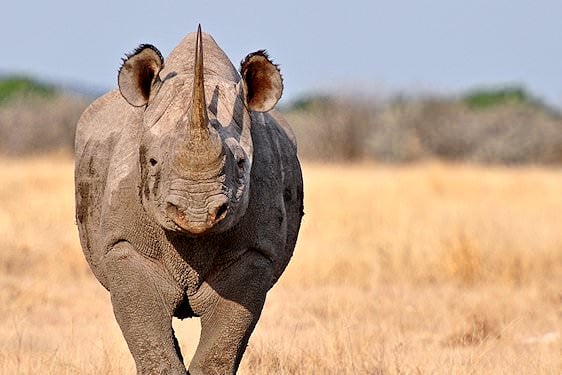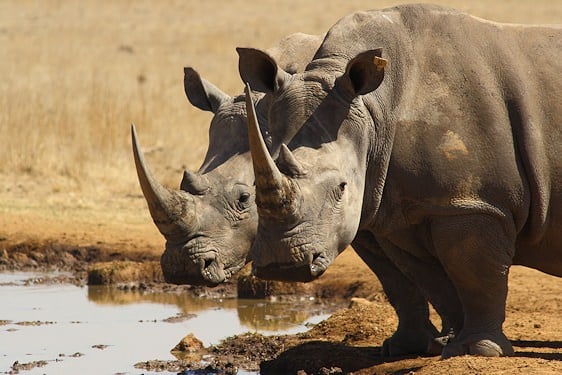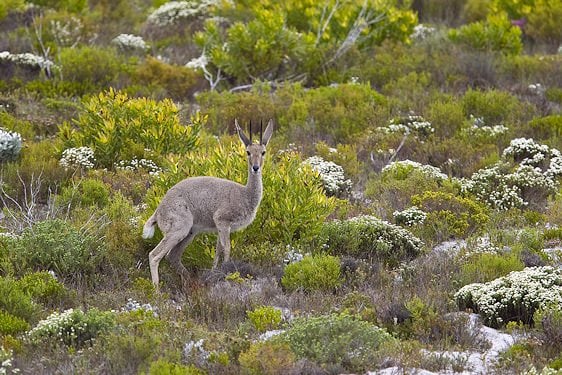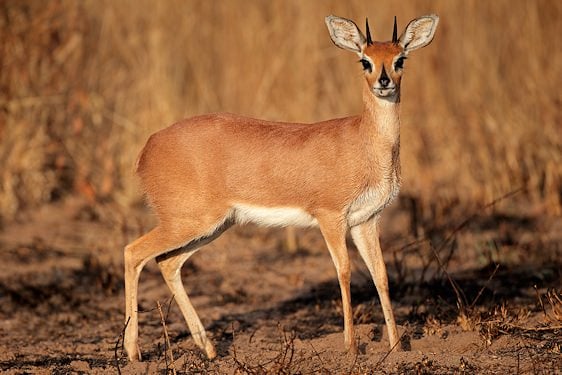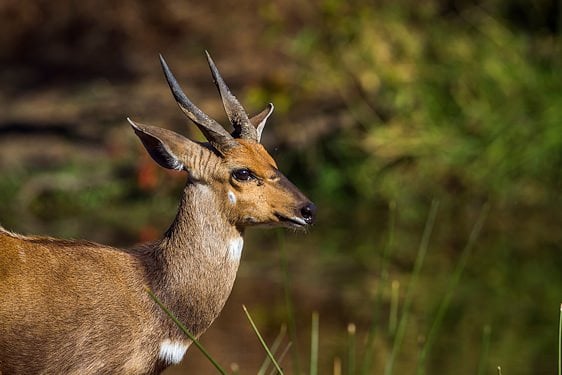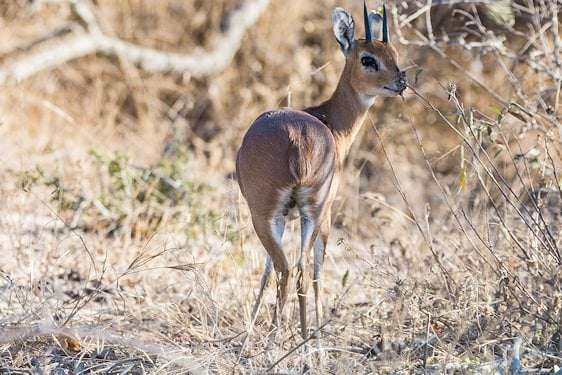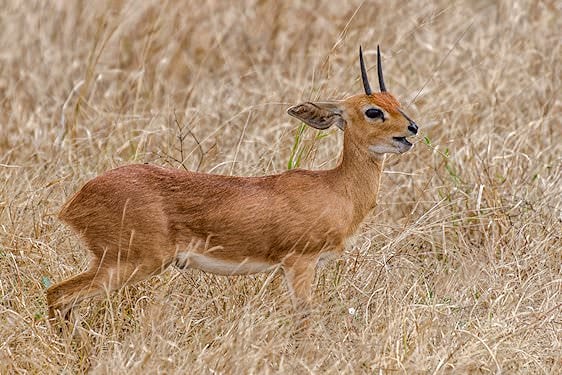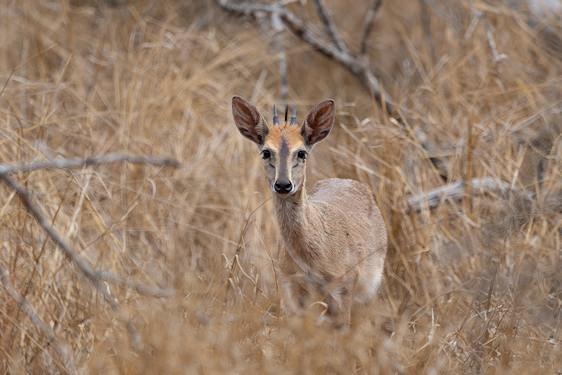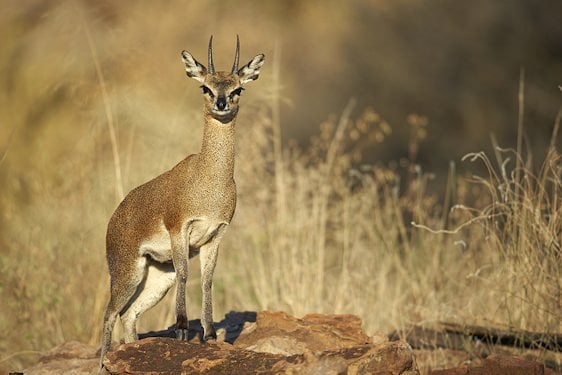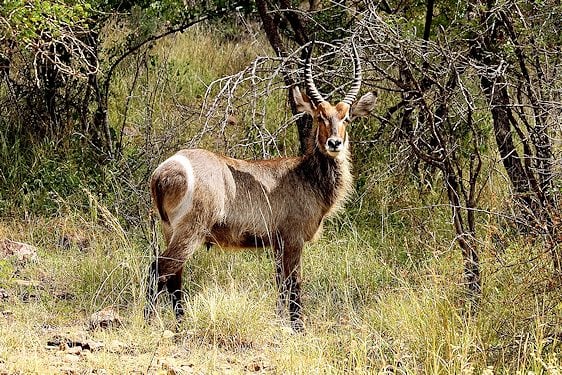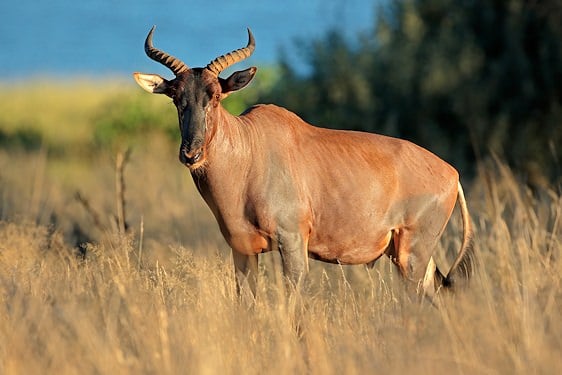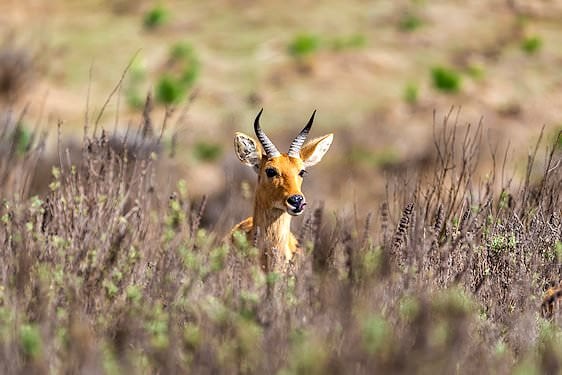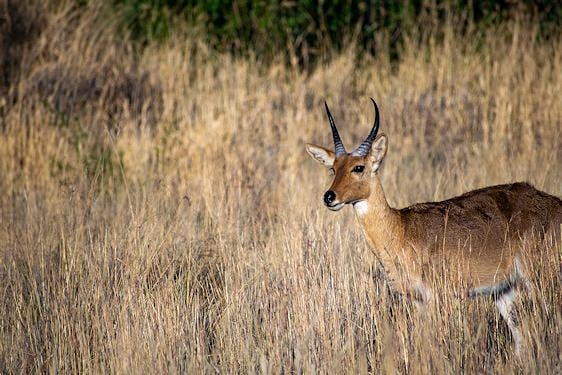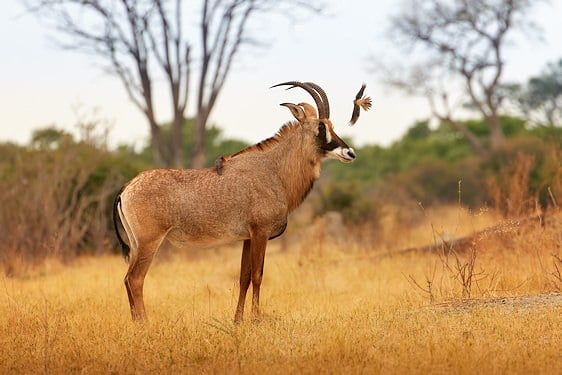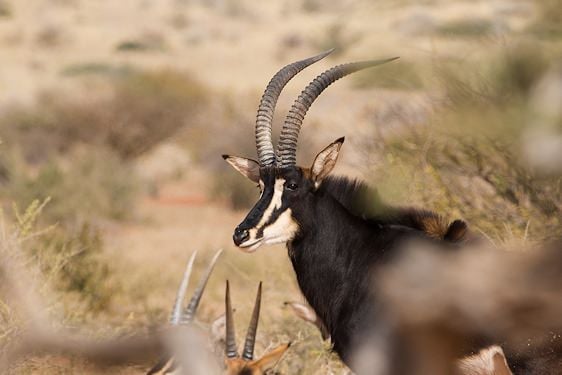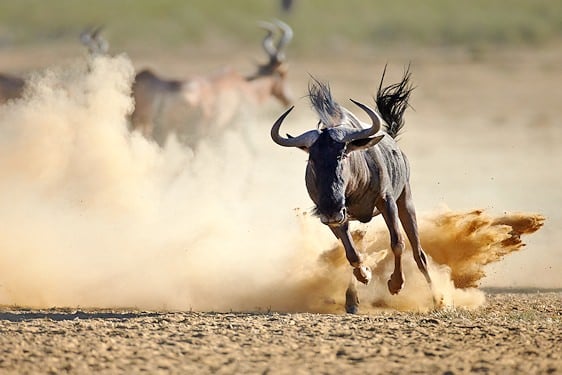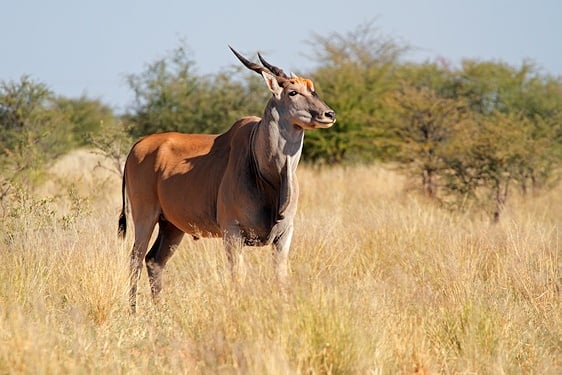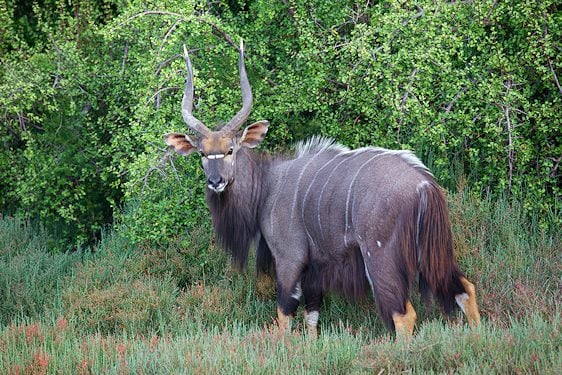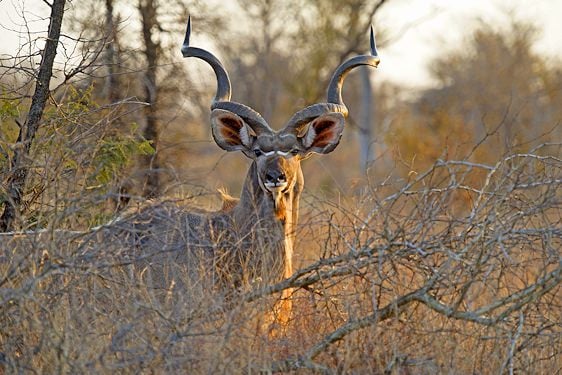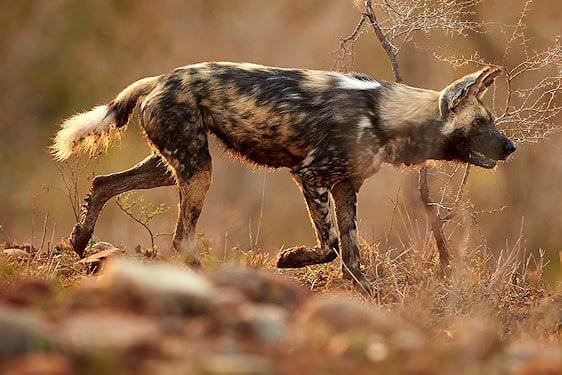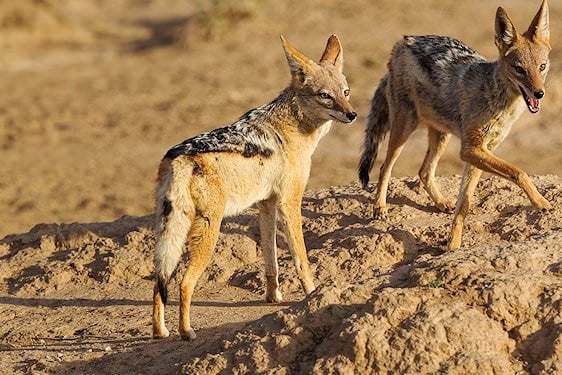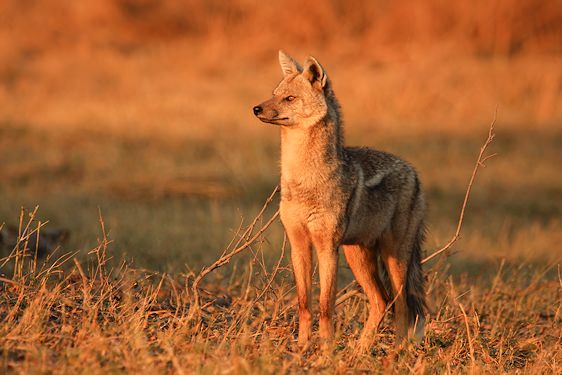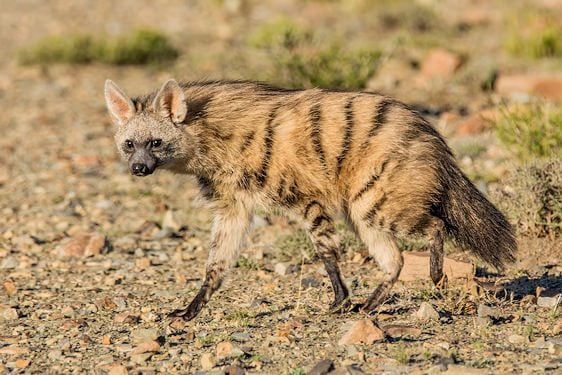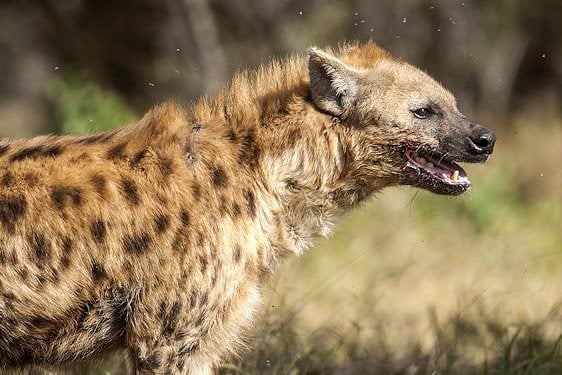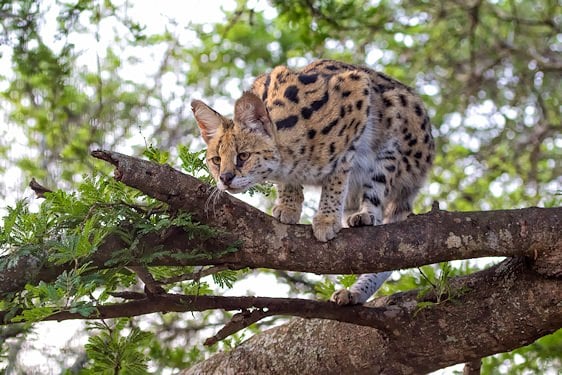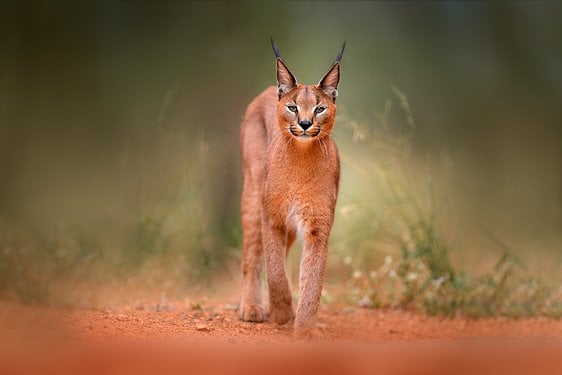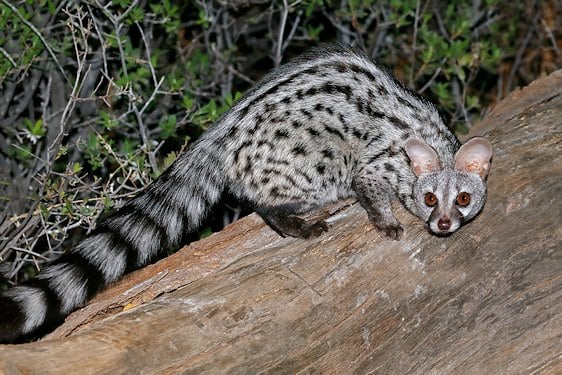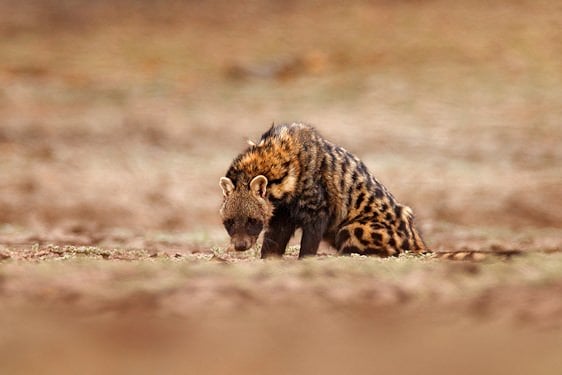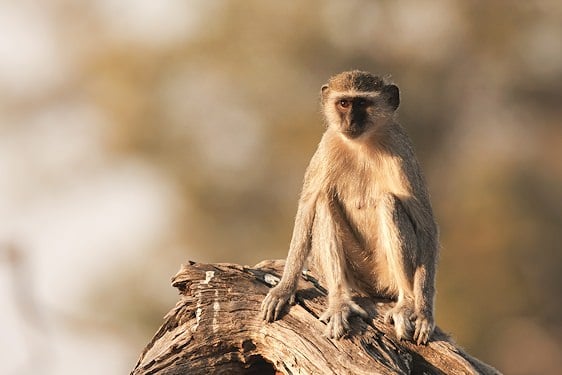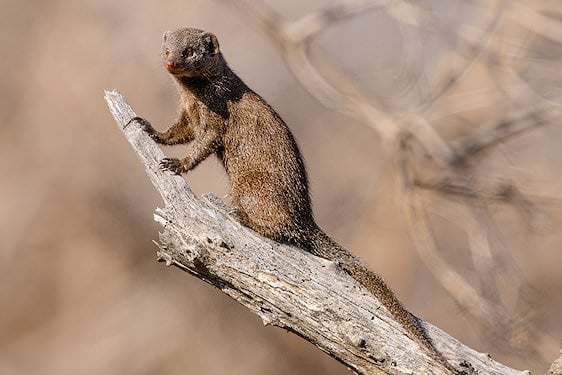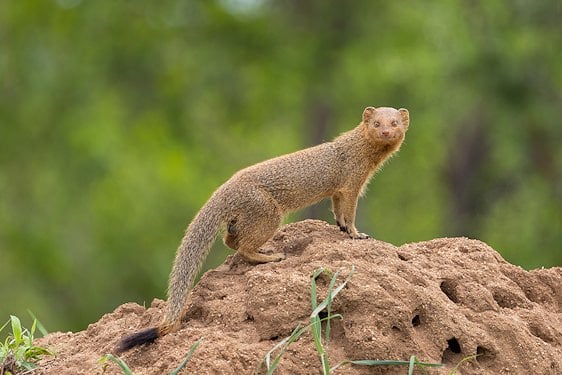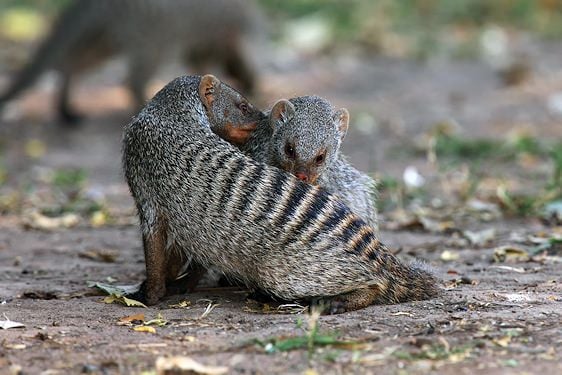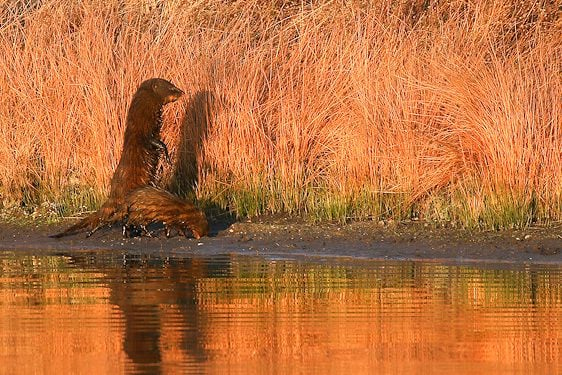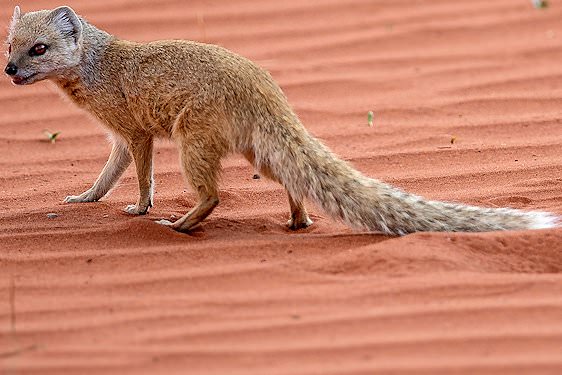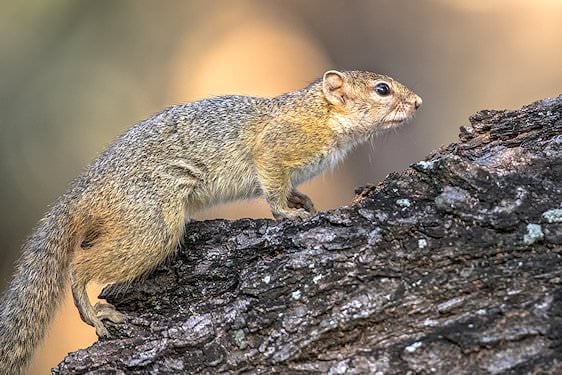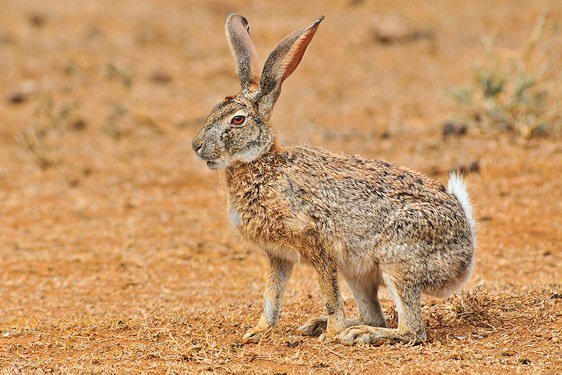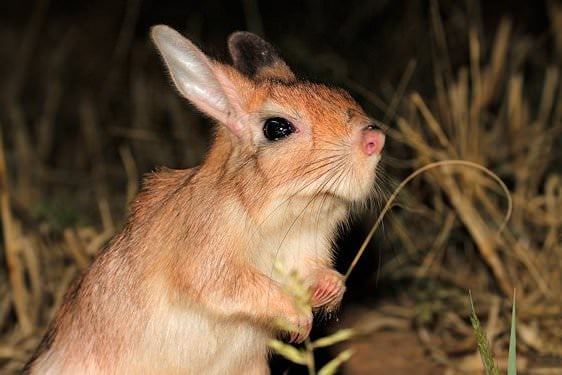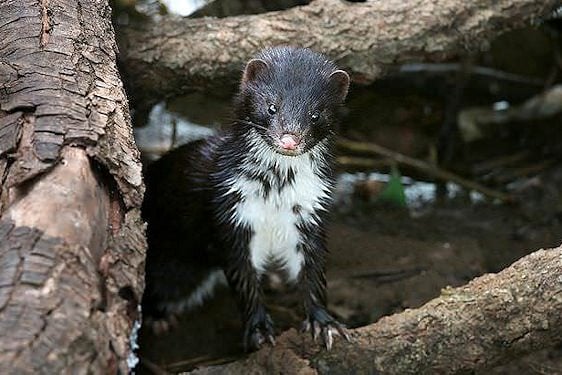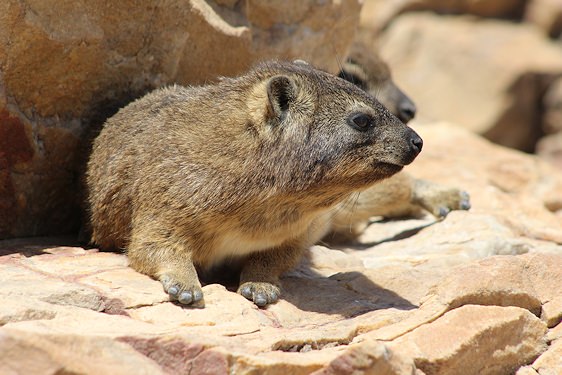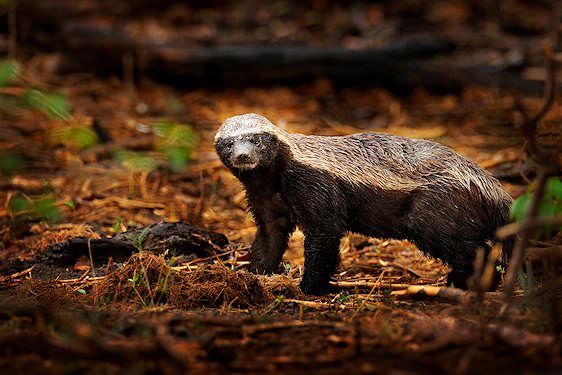African Wildlife The Big 5 and Other Animals
Help Me Plan- Home
- >
- African Travel
- >
- South Africa
- >
- National Parks
- >
- Kruger National Park
- >
- Mammals of the Kruger National Park
The Big Five
None of the large mammal species capture the imagination quite like the Big Five. In Kruger, these emblematic animals occur across varied habitats and are encountered by patient travelers at different times of day. Knowledgeable guiding, respectful viewing distances, and reading tracks and sounds meaningfully improve sightings while preserving animal welfare.
The lion is the largest cat on the continent and the most social cat in the world. Pride can range in size from three to thirty individuals. Within such a unit, the maneless female typically handle most hunting. The male are larger, with manes of red, black, or fawn, and occasionally form coalitions outside pride.
Leopard are the most elusive member of the Big Five. These spotted cat are typically solitary, except for mating and when a mother is caring for a cub. Their superb camouflage makes them difficult to spot. Leopard are known for hoisting prey into trees to feed without the threat of scavenger.
Despite not being the biggest or most ferocious member of the Big Five, many park rangers and safari guides consider the Cape buffalo the most dangerous member. Do not be fooled by its bovine appearance – buffalo are unpredictable, notoriously bad-tempered, and formidable with their horned weaponry.
The African elephant is the world's largest land mammal and one of the most captivating animals to encounter on safari. Elephant are typically gregarious and often observed in herd or as solitary bull. Cow average 2,800–3,500 kg, while male may weigh 5,000–6,300 kg. Kruger’s elephant population is substantial.
The black or hook-lipped rhino is an original member of the Big Five. Its hooked lip is suited for browsing. Though smaller than the white rhino, it is generally more defensive. The black rhino faces intense poaching pressure, and daily conservation efforts in Kruger focus on protecting this remarkable species.
The white or square-lipped rhino is larger than the black rhino and typically carries a longer front horn. Unlike its hook-lipped cousin, the white rhino uses square lips for grazing. This species faces ongoing threats from poaching; management and monitoring in Kruger remain critical to its future.
Safari & Tour Packages that include 'Big 5' game viewing
These Tours & Safaris offered by African Sky devote part of the itinerary to Big Five game viewing. From private guided tours that focus on South Africa’s highlights to luxurious fly-in adventures to private reserves and safari areas in Southern Africa.
The most popular reserves and parks include the Sabi Sand in Greater Kruger and Phinda in KwaZulu-Natal. Favorites in Botswana are Chobe National Park and the Okavango Delta. Namibia’s leading destination is Etosha National Park.
View Big Five Safaris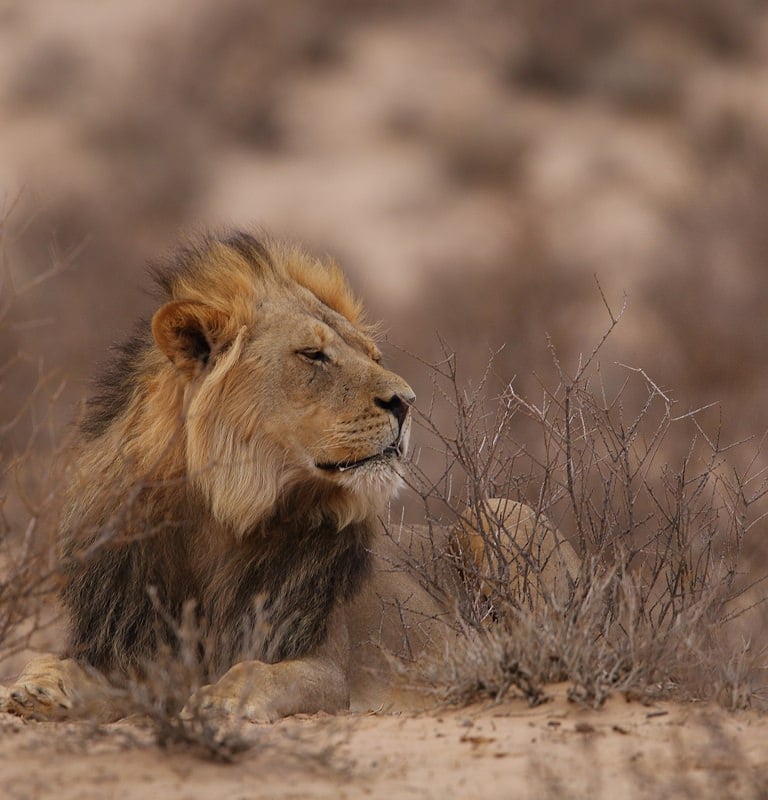
Antelope
From the Cape eland, the largest antelope species in South Africa, to the tiny grysbok, Kruger hosts a greater diversity of antelope species than any other African conservation area.
The grey rhebok is an endemic antelope found in mountain bushveld across South Africa. Coats are grey with slender features. The male carry straight vertical horns. These shy antelope are usually preyed upon by leopard, caracal, and large eagle.
This petite antelope prefers open savanna where low woody vegetation and tall grass provide cover from predator. Smooth red to golden-brown coats aid camouflage. Male possess straight, slender horns; both sexes have notably large ears.
The bushbuck is a large, non-territorial antelope widely distributed across sub-Saharan Africa. Solitary animals with reddish-brown coats marked by white stripes and spots. A male bushbuck carries sharp, spiral horns. Both sexes have powerful hindquarters and a slightly arched back.
This graceful dwarf antelope hides in tall grasslands and floodplains, grazing in small temporary herd. Along with a slender build and tall rounded hindquarters, oribi have distinctive black pre-orbital glands used for scent marking.
Sharpe's grysbok is a shy, solitary dwarf antelope found in hilly savanna. A reddish-brown coat streaked with silvery-white hair is characteristic. Nocturnal grazers feed on fallen fruit, herbs, and grass, sometimes sheltering in abandoned aardvark burrow.
The common duiker is a small antelope widely distributed across sub-Saharan Africa. Light-brown, gray-dusted coats, large pointed ears, and a dark facial stripe are typical. Male carry short, sharp horns; female may be hornless or carry short horns.
Klipspringer, or “rock leaper,” excels on steep rocky terrain. Small, robust antelope that browse fruit, flowers, and grasses, relying on succulent plants for water. Prey include leopard, baboon, caracal, and spotted hyena among others.
The waterbuck is a large, shaggy-coated antelope found in savanna near water. When threatened, it may evade predator by entering water. Both sexes show a white rump ring; only the male carry long, ridged spiral horns.
Tsessebe (topi) is a plains antelope found in small territorial herd in open woodland and savanna. Crescent-shaped horns, a dark face, reddish-brown coat, and purplish shoulder and upper hind limb tones are distinctive.
Impala are highly successful antelope of lush grasslands bordering open woodland. A smooth tan coat with a red-brown mantle and athletic build are typical. Deeply ridged S-shaped horns are worn by male; female lack horns.
Mountain reedbuck favor rugged hills in high grassland and often form small breeding herd. Woolly gray-brown coats with white underparts are typical. Male carry short, forward-slanting ridged horns.
This brown-coated antelope dwells in well-watered grassland and marshland. It relies on daily water and tall grass cover. Common reedbuck often form monogamous pairs; calving peaks in rainy months.
Roan antelope are among the largest antelope. Roan-colored coats, large tasseled ears, and a bold black-and-white facial mask are key features. Both sexes are powerfully built with a dark erect mane and heavy, back-curved horns.
Sable antelope are widely admired horse antelope with a robust build, strong neck with erect mane, and striking facial markings. Ridged scimitar-shaped horns are carried by both sexes, longer in male.
These gregarious herbivores gather in large herd on acacia savanna and short-grass plains. Broad muzzles and wide incisors suit bulk grazing. Both sexes have short, curved horns centered on a boss. The brindled coat shows dark vertical striping.
The eland is the largest bovid in Southern Africa. Adult male develop a hump, thick neck, and dewlap. Despite being the slowest antelope, it can leap up to 3 meters from a standstill.
Found in dense woodland and thicket, the nyala is elusive. Bulls carry handsome spiral horns and have shaggy slate-gray coats with spots and stripes; ewes are chestnut with shorter fur and no horns.
The stately kudu is highly revered. Bulls bear prolific spiral horns, sometimes reaching three full turns, and sport a throat beard. Cows are hornless with warmer brown coats. Both sexes have large ears and white dorsal stripes.
Kruger Park is the Top Safari Destination in South Africa
No other national park in South Africa captures the imagination like Kruger National Park. Roughly the size of the Netherlands, it is the country’s most important conservation area, preserving a rich heritage of fauna and flora for future generations.
The park and its adjoining private reserves share unfenced borders and offer a safari to suit every budget, from comfortable national park rest camps to some of the world’s most luxurious lodge accommodations.
Kruger Safaris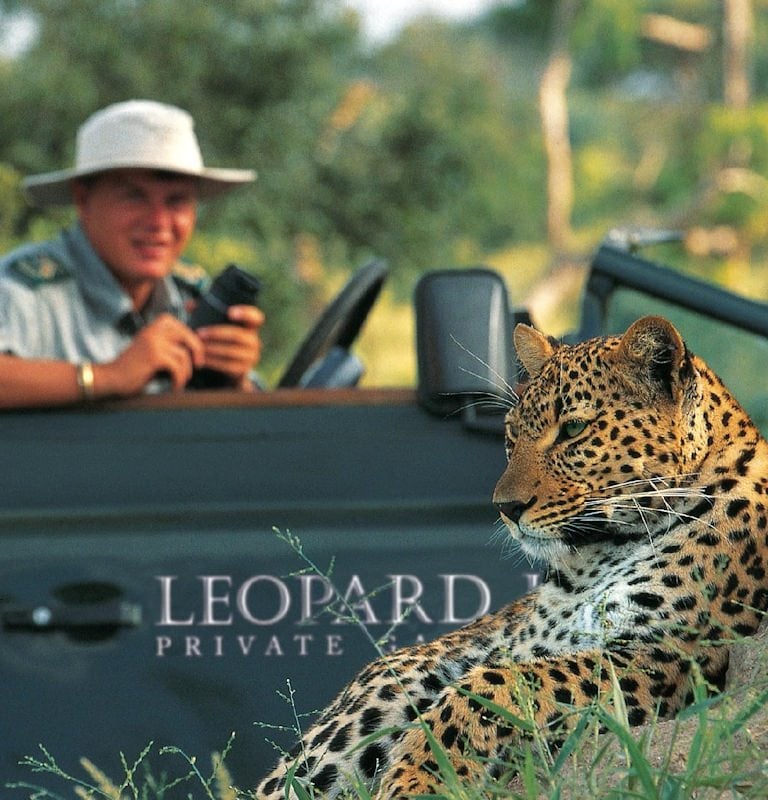
Predators and Insectivores
A wide selection of predator species are endemic to Kruger. Except for the cheetah and wild dog, most of these animals are active from dusk to dawn.
The African wild dog, or “painted dog,” is the continent’s largest canid and a highly successful cooperative hunter. This endangered animal persists in Kruger, with established pack more common in the south and central regions.
The black-backed jackal is one of the continent’s most widespread scavengers. Resembling the North American coyote, it adapts readily. When carrion or small prey are scarce, it may also feed on wild fruit and berry.
The side-striped jackal is rarer than its black-backed cousin and even more omnivorous. It favors well-watered woodland savanna and is typically nocturnal, so sightings are more likely at night.
The aardwolf is a small member of the hyaenid family. Despite hyena-like features, it is entirely insectivorous, specializing in termite. Aardwolf shelter in underground dens and typically emerge after dark. They may be seen solitary, in pairs, or as a family group.
Often labeled a scavenger, the spotted hyena is also an effective hunter. These hyaenids have powerful jaws that crush bone, which explains the pale color in feces. The whooping “laughter” is a signature sound of Kruger nights.
The serval is a striking wild cat, larger than most small cat, with a spotted coat reminiscent of a miniature cheetah or leopard. Mostly solitary and nocturnal, serval are rarely encountered.
The cheetah is the world’s fastest land mammal, capable of short bursts up to around 120 km/h. Unlike other cat, cheetah have semi-retractile claws. A small population lives in Kruger, and sightings are prized.
The caracal is a robust, medium-sized wild cat with large tufted ears and a short tail, similar in form to a bobcat. Brick-red coloration inspires the Afrikaans name “rooikat.” Typically solitary and nocturnal, it preys on mammals from mice to small antelope and on bird.
The African wildcat resembles a tabby house cat but with longer legs. Widespread yet shy, it is solitary and mostly nocturnal. Bird and rodent are primary prey, with occasional hare and hyrax taken.
The large-spotted genet, also called Cape genet, is native to southern Africa. Cat-like in appearance with a long, fluffy ringed tail, it is often seen in trees during evening drives. The coat is covered in large black spots.
The African civet is the largest African viverrid. Unlike the tree-inclined genet, the civet is strictly terrestrial and larger, with a bold, mottled coat of spots and stripes. Look for civet on roads and open ground at night.
Safari Lodges of the Kruger National Park, Sabi Sand, Timbavati, and Klaserie
These oases in the wilderness offer a range of luxury accommodations from which to enjoy safaris. A typical day starts with early coffee and an open 4X4 drive pursuing Kruger’s mammals, followed by breakfast and midday relaxation.
In late afternoon, another open 4x4 drive extends into evening, with chances to see predator readying for the hunt. The day often ends with dinner around a fire beneath a star-studded African sky.
Kruger Lodges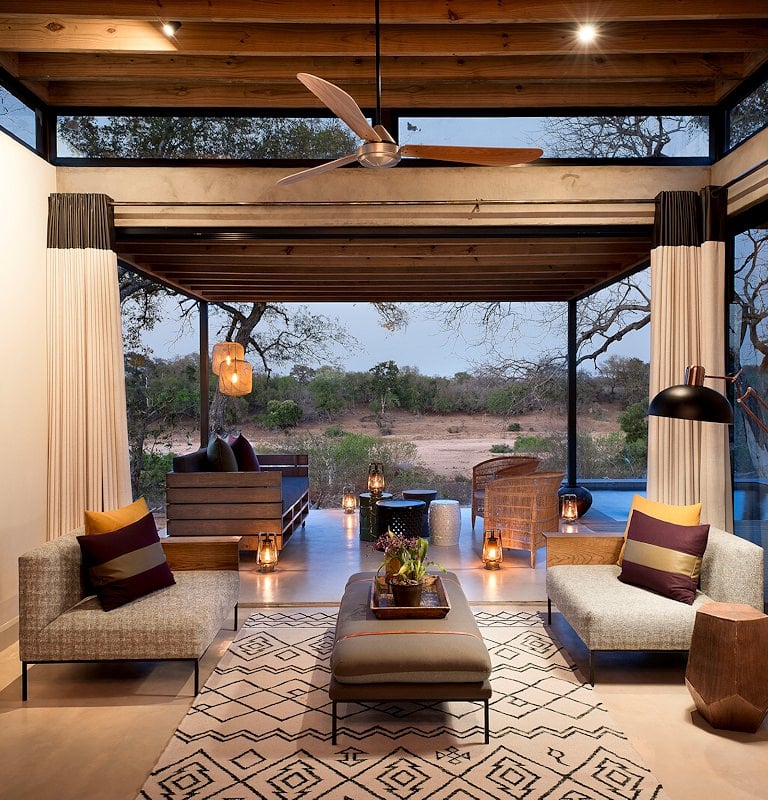
Other Mammals
Other mammals include the giraffe, the tallest of all the world’s animal species, the primates of Kruger, and the unique hippopotamus, considered by many to be the most dangerous of the African mammals.
The giraffe is the world’s tallest land mammal and an endearing animal to behold. Long legs and neck, long lashes, and a long, grasping tongue define this browser. Giraffe favor thorny trees, using tough tongues to navigate past prickles.
Do not be fooled by the hippopotamus’s comic appearance – this aquatic mammal can be dangerous. Hippo remain near or in water, bobbing in pods or sunning on sandbanks. At night, they may cover long distances while grazing.
The vervet monkey is common in Kruger and can become a nuisance at rest camps and picnic sites. Troops may exceed twenty individuals and eat a wide variety of food. Do not feed or approach them to prevent aggressive behavior.
The chacma baboon is among Africa’s largest primates. Common across the park, it is bolder near settlements; large canines warrant caution. Watching troop dynamics is a highlight for many visitors.
Large herd of zebra occur throughout Kruger. The bold black-and-white stripe pattern confuses predator during flight. Zebra commonly graze alongside blue wildebeest.
Discover More of Africa's Unique Safari Destinations
Kruger Park is one of Africa's largest and most sought-after safari destinations. The subcontinent also offers many other remarkable parks across Namibia, Botswana, Zimbabwe, and Zambia.
Some parks offer species that do not occur in Kruger, including Damara dik-dik in Namibia, sitatunga in Botswana, and large numbers of lechwe in Zambia.
Explore these remote conservation areas for different habitats and wildlife.
African Safaris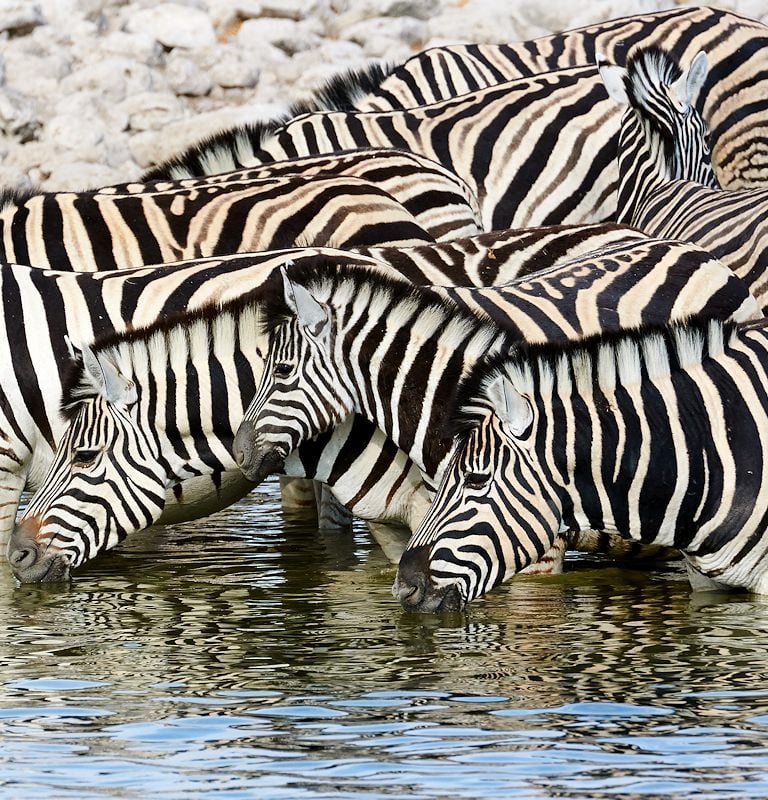
Small Mammals
Though not as imposing, the antics of smaller mammals are often highlights of a day’s safari. The honey badger is especially noteworthy and can even deter a leopard when confronted.
Found in southern savanna and arid zones, the dwarf mongoose is Africa's smallest carnivore. Packs occupy territories rich in termite mounds for denning. Reddish-brown coats and long claws aid foraging for insect and fruit.
Long, slender, short-legged carnivores of wooded savanna. A black-tipped tail nearly equals body length; short curved claws help it climb in search of prey.
Banded mongoose are highly sociable, forming some of the largest territorial packs among carnivores. Named for the dark bands along the back and tail tip, they often smash beetle, millipede, and snail against rocks to feed.
The water (marsh) mongoose is a solitary, dark-coated carnivore of wetland edges, preying on crayfish, freshwater crab, and small reptile. Strong bodies and small feet suit swimming; sensitive palms aid handling prey underwater.
As the name suggests, this mongoose has a large white tail used in warning displays. A nocturnal forager of grassland, it feeds on insect such as termite and dung beetle and may deploy scent glands in defense.
The tree squirrel (Smith’s bush squirrel) is an arboreal rodent of savanna woodland. Small groups den in tree holes, groom to strengthen bonds, and may mob small predator as a defense.
The scrub hare is common in South Africa and southern Namibia. It favors scrub, tall grassland, and woodland, feeding on green grass. Long gray ears remain upright and alert to danger.
Despite the name, the spring hare is a large bipedal rodent of arid regions. A long black-tipped tail helps balance when upright. Diet includes grasses and seeds, with occasional insect taken.
The porcupine is Africa’s largest rodent, armed with black-and-white banded quills over the back, sides, and hindquarters. It is adaptable, often burrowing in rocky hills, and forages for roots, bark, and fallen fruit at night.
Also known as “zorilla,” the striped polecat is a small carnivore with shaggy black fur and four white stripes extending to a bushy tail. Warning coloration deters enemy; it can spray pungent fluid toward a predator.
The rock dassie (hyrax) is a close relative of the elephant despite its small size. Colonies bask on boulders and rocky outcrops in morning and late afternoon, when eagle such as Verreaux’s and martial may hunt.
Honey badger have powerful jaws, sharp claws, and thick, loose skin over a robust body. Tenacious and short-tempered, a honey badger may even deter larger predator in self-defense. As the name suggests, it often raids honey and bee brood.





